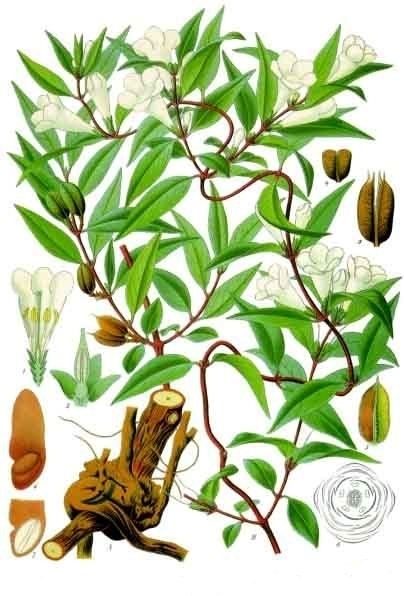Higher classification Loganiaceae | Scientific name Gelsemium Rank Genus | |
 | ||
Lower classifications Gelsemium sempervirens, Heartbreak grass | ||
Gelsemium sempervirens carolina jessamine blooming at the crosby arboretum january 2012
Gelsemium is an Asian and North American genus of flowering plants belonging to family Gelsemiaceae. The genus contains three species of shrubs to straggling or twining climbers. Two species are native to North America, and one to China and Southeast Asia.
Contents
- Gelsemium sempervirens carolina jessamine blooming at the crosby arboretum january 2012
- Properties
- Active Components
- Medicinal uses
- Alleged poisoning victims
- Symptoms of poisoning
- Self experimentation
- References
Carl Linnaeus first classified G. sempervirens as Bignonia sempervirens in 1753; Antoine Laurent de Jussieu renamed the genus in 1789. Gelsemium is a Latinized form of the Italian word for jasmine, gelsomino. G. elegans is also nicknamed "heartbreak grass".
Properties
All three species of this genus are poisonous.
Active Components
The active components of gelsemium are the alkaloids, which are present in a concentration of about 0.5%. These consist primarily of gelsemine (a highly toxic compound related to strychnine), with lesser amounts of related compounds (gelsemicine, gelsedine, etc). Other compounds found in the plant include scopoletin (also called gelsemic acid), a small amount of volatile oil, fatty acid and tannins.
Gelsemium has been shown to contain methoxyindoles.
Medicinal uses
As late as 1906, a drug called Gelsemium D 3, made from the rhizome and rootlets of Gelsemium sempervirens, was used in the treatment of facial and other neuralgias. It also proved valuable in some cases of malarial fever, and was occasionally used as a cardiac depressant and in spasmodic affections, but was inferior for this purpose to other remedies.
Alleged poisoning victims
Symptoms of poisoning
The poison affects the vision and respiration. Symptoms can appear almost immediately.
Self-experimentation
Arthur Conan Doyle, writer of the Sherlock Holmes series, once administered himself a small amount of gelsemium and kept increasing the amount every day until he could no longer stand the ill effects. In a letter written by him to the British Medical Journal on 20 September 1879, he described that he had persistent diarrhoea, severe frontal headache, and great depression, and therefore stopped his self-experimentation at 200 minims.
